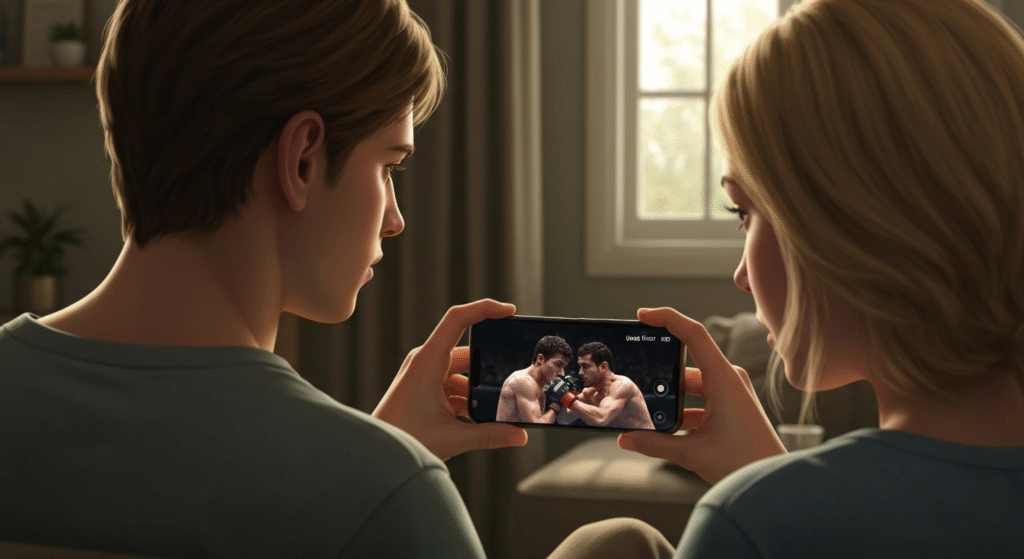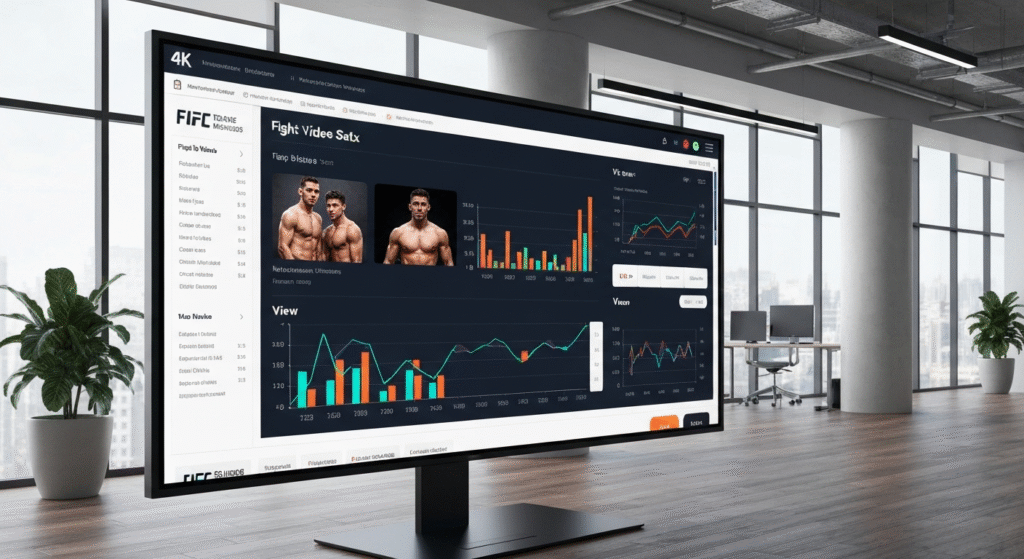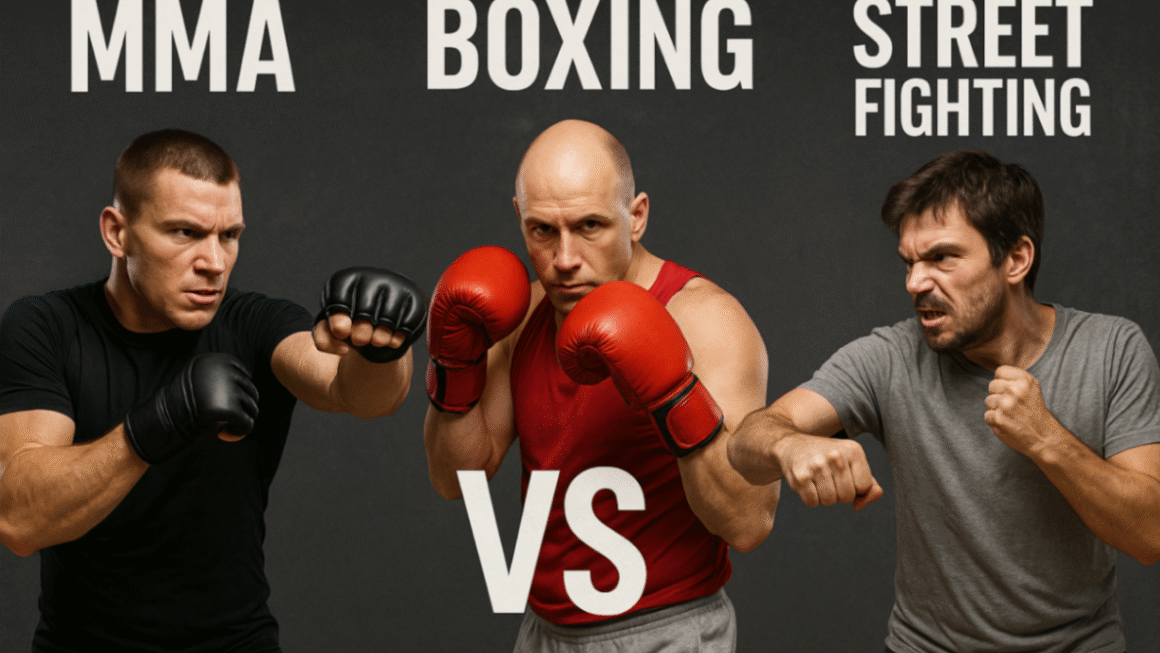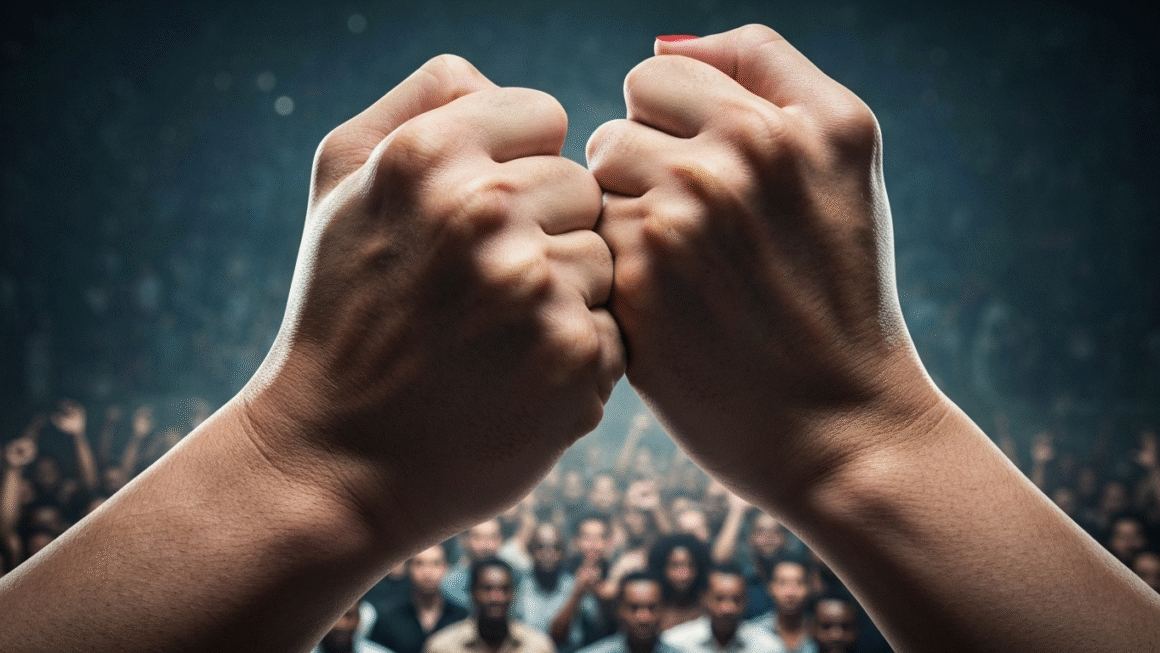Key Highlights
- Uncut fight videos go viral due to a mix of psychological curiosity and the shock value of witnessing a real-life showdown.
- Social media algorithms on platforms like YouTube and content hubs like WorldStarHipHop significantly boost the visibility of these videos.
- The popularity of these clips has real-world consequences, sometimes prompting increased police presence in American communities.
- Watching a raw beatdown raises legal and ethical questions for viewers and those who share the content.
- Personalities like Kimbo Slice rose to fame through such videos, highlighting a path from internet notoriety to professional fighting.
- Statistics show fight compilations and related videos frequently gather millions of views, demonstrating their massive online audience.
Introduction
Have you ever scrolled through your social media feed and stumbled upon a raw, uncut video of a street fight? It is a common experience for many Americans. These clips, often capturing a sudden and violent confrontation involving an attacker or even a young woman, can be jarring yet strangely captivating. This widespread fascination raises an important question: why are we so drawn to watching real-life violence? This article explores the psychological drivers behind this trend, the role of social media in their popularity, and the real-world impact these viral videos have on our communities.
Why Uncut Fight Videos Go Viral: Psychological and Social Drivers

The viral spread of uncut fight videos is not a random occurrence. It is fueled by a powerful combination of deep-seated psychological triggers and modern social dynamics. Our innate curiosity about conflict, combined with the raw, unfiltered nature of a street showdown, creates an almost irresistible pull for many viewers. The content is shocking, immediate, and feels authentic in a way that produced media often does not.
Furthermore, platforms like WorldStarHipHop and the algorithms that power social media play a crucial role in this phenomenon. They are designed to promote content that elicits strong reactions, and few things are more reaction-inducing than a real fight. As we explore the specific reasons for their popularity, we will look at shock value, algorithmic influence, key personalities, and the ethical dilemmas they present.
Curiosity and Shock Value: What Draws Viewers to Raw Street Fights
At its core, the appeal of raw street fight videos taps into a primal part of human psychology. There is a natural, albeit sometimes uncomfortable, curiosity about conflict and survival. Watching a real showdown from the safety of a screen can trigger a vicarious adrenaline rush, simulating a fight-or-flight response without any actual danger. This morbid curiosity is a powerful hook that keeps viewers watching.
The shock value of this content cannot be overstated. Unlike choreographed movie fights, a real street beatdown is unpredictable and raw. This authenticity is a major draw. Viewers are often compelled by the unfiltered reality of the situation, whether it involves a heated argument escalating or a young woman unexpectedly defending herself.
This combination of factors makes these videos highly shareable:
- Vicarious Thrill: Experiencing danger from a safe distance.
- Morbid Curiosity: An innate desire to witness forbidden or taboo events.
- Authenticity: The appeal of unscripted, real-life drama.
- Shock Factor: The raw violence grabs attention immediately, prompting shares and comments that lead to more related videos being recommended.
The Role of Social Media Algorithms in Boosting Viral Fight Content
Social media platforms are designed for one primary goal: to keep you engaged. The algorithms that determine what you see are finely tuned to promote content that generates strong emotional reactions, shares, and comments. Uncut fight videos are algorithmic gold. Their shocking nature almost guarantees a high level of engagement, pushing them into the feeds of millions of Americans.
When a user watches, likes, or comments on a fight video, the algorithm interprets this as a signal of high interest. It then promotes that video and related videos to a wider audience. This creates a feedback loop where popular fight videos become exponentially more visible. Platforms like WorldStarHipHop built their entire brand on this model, becoming the primary destination for this type of content long before it was common on mainstream sites. An attacker’s actions can become viral content within hours.
Key algorithmic drivers include:
- High Engagement: Fights generate intense reactions, comments, and shares.
- Watch Time: Viewers are often captivated until the end of the showdown, signaling content quality to the algorithm.
- Content Spirals: Watching one video leads to a cascade of similar recommendations, creating a binge-watching effect.
Famous Personalities and Platforms Fueling the Trend (e.g., Kimbo Slice, WorldStarHipHop)
The viral fight video trend did not emerge in a vacuum; it was fueled by specific platforms and personalities. WorldStarHipHop became the epicenter of this culture, creating a space where users could upload and watch raw street fights. The site’s “WSHH” watermark became synonymous with shocking and viral content, turning an ordinary dude in a showdown into an internet spectacle overnight.
Perhaps the most famous example of someone who capitalized on this trend is the late Kimbo Slice (Kevin Ferguson). He became an internet legend in the early 2000s through grainy videos of his dominant victories in unsanctioned backyard brawls. According to ESPN, these raw clips were his launchpad to a professional career in mixed martial arts. [1] His story created a blueprint, showing that internet fame from fighting could lead to legitimate opportunities.
This ecosystem thrives on:
- Centralized Platforms: Sites like WorldStarHipHop that aggregate and brand the content.
- Breakout Stars: Personalities like Kimbo Slice who prove the potential for fame.
- User-Generated Content: A constant stream of new videos from everyday people, sometimes featuring a young woman or an unexpected hero.
Safety, Ethics, and Legality: Key Issues for Viewers and Sharers
While watching a viral fight might seem like harmless entertainment, it comes with significant safety, ethical, and legal considerations. The legality of filming and sharing a fight can be murky. Depending on jurisdiction, an individual filming could face legal trouble, especially if they appear to be encouraging the conflict rather than seeking help. Sharing videos of a beatdown can also contribute to cyberbullying or defamation claims.
The ethical dimension is equally complex. Is it right to consume someone’s real-life trauma as entertainment? These videos often capture individuals at their worst moments, and their viral spread can have lasting personal and professional consequences for everyone involved, including the attacker and the victim. For Americans watching, it is important to consider the human cost behind the content.
As seen in a recent case in Cincinnati, a viral fight video led to a major police investigation and public safety initiatives. [2] This highlights that these digital clips have tangible, real-world consequences. Key issues include:
- Legal Risks: Potential charges for filming, sharing, or appearing to incite violence.
- Ethical Dilemmas: The moral implications of profiting from or enjoying others’ suffering.
- Real-World Impact: Viral videos can lead to arrests, community fear, and increased police scrutiny.
Stats and Impact: Measuring the Popularity of Viral Fight Videos

The sheer volume of views on uncut fight videos is a testament to their incredible popularity. Individual clips and compilations regularly rack up millions, sometimes tens of millions, of views across various platforms. This massive viewership highlights a significant cultural appetite among many Americans for this type of raw, unfiltered content, turning a simple showdown into a global spectacle.
This popularity translates into significant real-world impacts that extend far beyond the digital screen. As we will see, the statistics are staggering, and the platforms that host this content have developed sophisticated ways to categorize and spread it. Furthermore, the effects are felt in local communities, which must often deal with the aftermath of a viral beatdown.
Underground Fight Video View Counts and Trending Statistics in the US
The numbers behind underground fight videos are staggering. While precise data is fragmented across many platforms, it is clear that this content genre is one of the most-watched online. Compilation videos on YouTube with titles like “Instant Karma Fails” or “Street Fight Knockouts” routinely achieve view counts in the millions. For many Americans, these videos are a common sight in their recommended feeds.
Sites like WorldStarHipHop built their reputation on this content, drawing massive traffic specifically for their fight compilations. Even on platforms not dedicated to fights, like Reddit, communities (subreddits) for sharing and discussing these videos have hundreds of thousands of members who view and engage with new clips daily. A single viral beatdown can generate more views than many professionally produced news segments.
Here is a look at typical view counts for this type of content on a platform like YouTube:
|
Video Title Example |
Typical View Count Range |
|---|---|
|
“Street Fight Gone Wrong Compilation” |
5M – 15M+ views |
|
“Instant Justice – Bullies Get Owned” |
10M – 25M+ views |
|
“Funniest Knockouts of the Year” |
20M – 40M+ views |
|
Single Viral Fight Clip |
500K – 5M+ views |
These figures demonstrate a consistent and massive audience for fight-related videos.
How Fight Compilation Sites Like Reddit and Rumble Spread Viral Content
Beyond initial viral spikes on social media, dedicated platforms and communities play a huge role in the longevity and spread of fight videos. Websites like Rumble and forums like Reddit have become massive archives for this content, where users can find, share, and discuss countless clips. These sites act as aggregators, collecting the most shocking videos from across the internet into one place.
On Reddit, subreddits such as r/fightporn or r/PublicFreakout serve as hubs where a community of users upvotes the most compelling content, ensuring the most dramatic showdown clips rise to the top. This community-driven curation is highly effective at filtering for the most engaging videos. It creates an ecosystem where users are not just passive viewers but active participants in the content’s spread.
This system accelerates virality through:
- Aggregation: Centralizing content from various sources.
- Curation: Users vote on the best or most shocking videos.
- Community: Discussion and commentary add another layer of engagement.
- Categorization: Videos are often tagged (e.g., “bully gets owned,” “instant karma”), making it easy for Americans to find specific types of content on platforms like WorldStarHipHop or through related videos.
Effects of Viral Fight Videos on Communities, Security, and Professional Leagues
The impact of viral fight videos extends far beyond online view counts, creating tangible consequences for local communities. When a fight in a public space goes viral, it can shape public perception of safety in that area. For example, a violent brawl caught on video in downtown Cincinnati prompted city leaders to announce an increased police presence, a new bike patrol, and a dedicated safety committee to address public concerns.
This demonstrates a direct link between a digital event and real-world policy. The fear and outrage generated by a brutal beatdown video can pressure local officials to act, altering security measures for all Americans in that community. These incidents can also lead to copycat behavior or escalate tensions between different groups within a neighborhood. For those involved, like a young woman caught in a fight, the video’s spread can lead to lasting stigma.
The key effects include:
- Increased Security Measures: Police may increase patrols in areas where viral fights occur.
- Community Fear: Residents may feel their neighborhood is less safe, impacting local businesses and daily life.
- Policy Changes: City leaders may be forced to create new task forces or safety plans in response to public outcry.
Conclusion
In conclusion, uncut fight videos tap into deep-rooted psychological and social dynamics that captivate audiences. The blend of curiosity, shock value, and the adrenaline rush they provide makes these videos remarkably engaging. With platforms like WorldStarHipHop and personalities such as Kimbo Slice amplifying their reach, it’s no surprise that these clips rack up millions of views daily. However, understanding the implications of sharing and consuming this content is vital, as it raises important ethical and safety considerations. As we navigate this phenomenon, let’s not overlook the impact these videos have on both viewers and communities. If you want to explore more about the world of viral fight videos and their influence, don’t hesitate to reach out for more insights.
Frequently Asked Questions
Is it safe or legal to watch and share viral fight videos online?
The legality of watching is generally not an issue for Americans, but sharing or filming a beatdown can carry legal risks, depending on the context and your location. Ethically, sharing content from platforms like WorldStarHipHop contributes to the spectacle and can harm the attacker and victim.
Where can I find authentic and trending street fight videos?
Platforms like WorldStarHipHop, Rumble, and specific communities on Reddit are known for aggregating this content. Searching for related videos on major video-sharing sites will also yield many results, from a major showdown to a minor conflict involving a single dude.
Do professional fighting organizations post viral fight content, and how is it different from street videos?
Yes, professional leagues post fight highlights, but they are fundamentally different. These are sanctioned sporting events with rules, referees, and trained athletes. Unlike a raw street beatdown found on WorldStarHipHop, professional content focuses on sport and skill, not chaotic violence.
Citations: [1] https://www.espn.com/mma/story/_/id/15957017/kimbo-slice-life-remembered [2] https://www.wcpo.com/news/local-news/hamilton-county/cincinnati/your-questions-answered-about-the-violent-viral-fight-in-downtown-cincinnati




